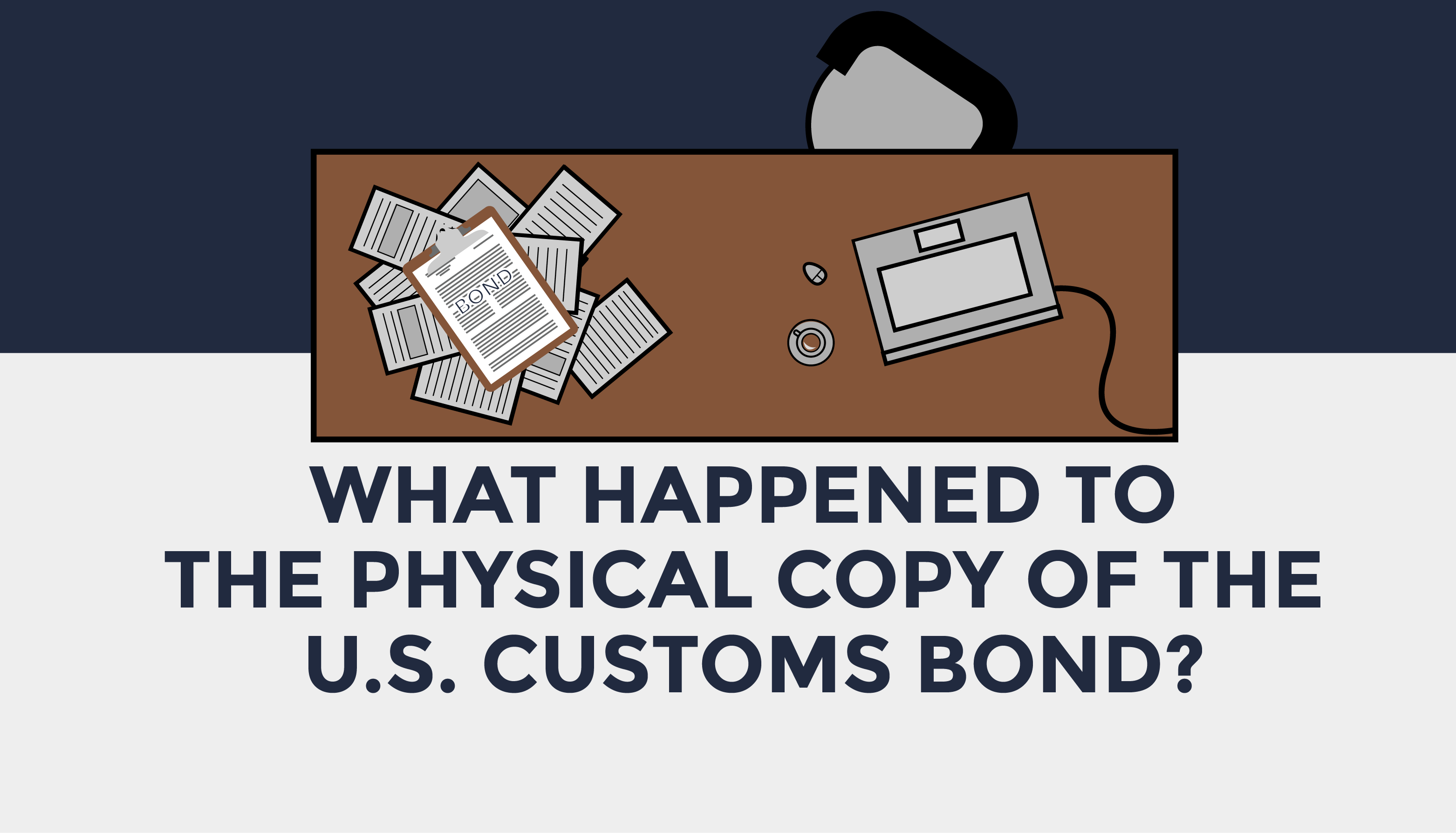In the past a physical copy of the U.S. Customs Bond was sent out to U.S. Importers, but now CBP relies on the eBond system.
Prior to January of 2015, a physical copy of the U.S. Customs Bond was sent out to an importer when they secured this bond with U.S. Customs and Border Protection. This physical copy would then need to be physically filed with the port that importer would be using to make entries.
However, after January 3, 2015, all U.S. Customs Bonds are filed electronically through the eBond system.
The Benefits of the eBond System
Since a bond use to have to be filed at the port or ports where an importer would be making entry, that importer would have to make their entries ONLY at those ports.
With the implementation of the eBond, importers have more flexibility with where their entry is made. This is particularly helpful in the event that an entry must be re-routed due to inclement weather or backlogged ports.
The Electronic Data Interface (EDI) is the system used to file bonds and process entries. Since these processes are handled electronically, they are able to continue working outside of typical office hours. Enabling bonds to filed and entries to be made on a 24/7 basis.
Having a centralized repository for all U.S. Customs Bonds helps standardize the way CBP interacts with the Trade across all ports of entry. It also protects CBP by informing CBP Officers that a valid bond has been secured before any cargo is released into commerce.
How Will You Receive Your U.S. Customs Bond?
With the full implementation of the eBond, a copy of the U.S. Customs Bond is no longer physically sent out to importers. Now the bond is delivered in the form of an email containing the bond number.
Once the bond number has been received, you can begin using it on your entry paperwork and making entries under that bond! Overall, eBonds reduce your paperwork and make it easier to import into the U.S.
Trade Risk Guaranty’s Multi Year Pricing Structure reduces your paperwork even further by allowing you to pay for multiple years of your required bond at one time. Selecting a multi year billing cycle will also typically save you money as you will not have to renew your bond every year.





![[Webinar] How Could Changes to De Minimis Impact Your Company?](https://traderiskguaranty.com/trgpeak/wp-content/uploads/2025/05/trg-how-de-minimis-impacts-customs-bond-webinar-400x250.png)

